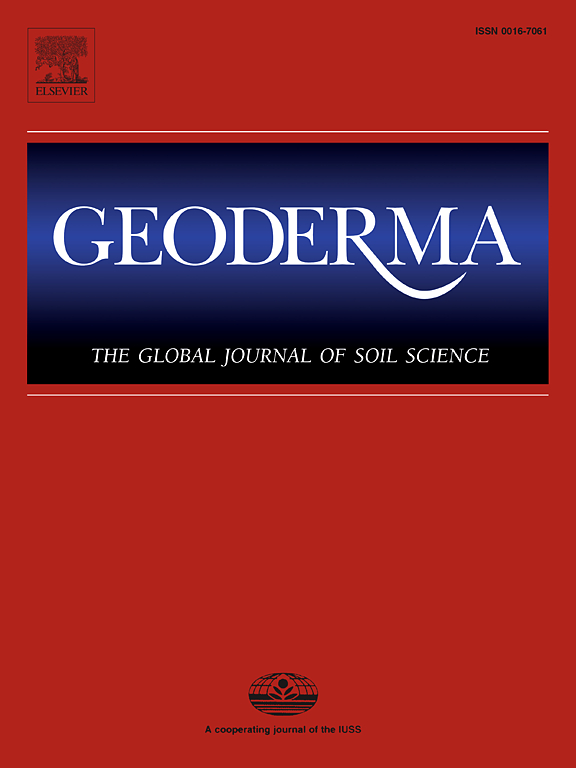Nitrogen addition has a minor effect on aridity thresholds for soil nematodes at the global scale
IF 5.6
1区 农林科学
Q1 SOIL SCIENCE
引用次数: 0
Abstract
Soil nematodes are regulated by soil moisture, with a global aridity threshold identified for total nematode diversity. Nitrogen (N) deposition also influences soil nematodes, but its effect on their aridity threshold remains unclear. Here, we synthesized 403 paired observations from 101 global N addition studies to investigate how N enrichment regulates nematode abundance and diversity along the aridity gradient. We identified aridity thresholds for both nematode abundance, diversity, and ecological indices (e.g., maturity index, plant parasitic index, structure index, enrichment index, and channel index). Specifically, the abundance of total, plant-feeding, and omnivorous-predatory nematodes exhibited a threshold at an aridity index (AI) of 0.27, while bacterial- and fungal-feeding nematodes had thresholds at AI values of 0.22 and 0.26, respectively. N addition raised the aridity thresholds for the abundance of bacterial-feeding, plant-feeding, and omnivorous-predatory nematodes, as well as Shannon diversity and maturity index, but lowered the aridity threshold for the channel index. We also analyzed the effects of N addition on the nematode community both below and above aridity thresholds. N addition decreased bacterial-feeding and omnivorous-predatory nematode abundance beyond their respective thresholds. It consistently reduced Shannon diversity and richness, both below and above aridity thresholds, and lowered the structure index above the thresholds. While N addition did not change the plant parasitic index overall, it significantly decreased this index beyond aridity thresholds. These findings suggest that N addition does not alter the aridity threshold for total nematode abundance, but it modifies the threshold response of different trophic groups, highlighting their differential sensitivities to aridity in the context of future N deposition.

求助全文
约1分钟内获得全文
求助全文
来源期刊

Geoderma
农林科学-土壤科学
CiteScore
11.80
自引率
6.60%
发文量
597
审稿时长
58 days
期刊介绍:
Geoderma - the global journal of soil science - welcomes authors, readers and soil research from all parts of the world, encourages worldwide soil studies, and embraces all aspects of soil science and its associated pedagogy. The journal particularly welcomes interdisciplinary work focusing on dynamic soil processes and functions across space and time.
 求助内容:
求助内容: 应助结果提醒方式:
应助结果提醒方式:


